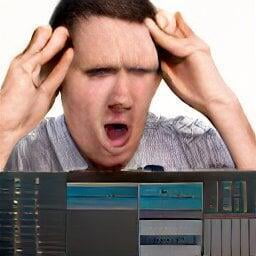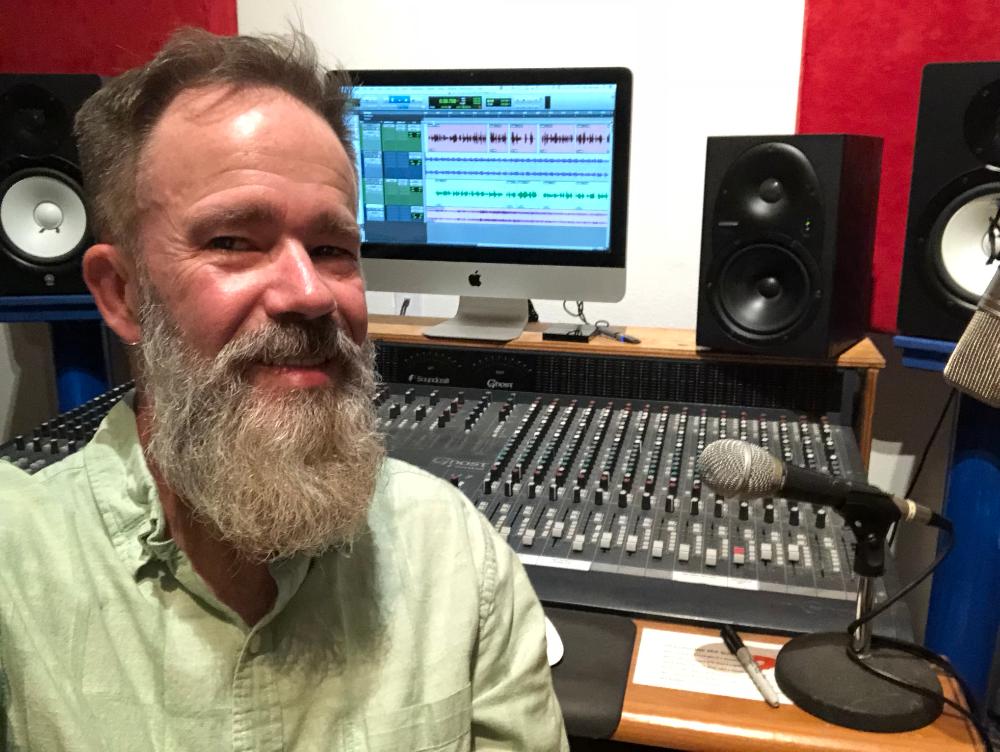It's now very common for voice artists to deliver voiceover from home studios to wherever in the world the producer of the final content is––as opposed to having the voice actor come in to a traditional studio. In fact, I have clients for whom I've done voiceover for decades––and never met them in person. It's also very common nowadays for the editor/producer of the final content to be a multimedia generalist, and not a specialized audio engineer. But whatever your role as the person tasked with receiving voiceover and editing it into the final production, you want to be able to work quickly and without frustration.
Oh, I definitely have deep experience being a frustrated audio editor.
Back long ago, when I was a production director for a radio station, I was tasked with putting together the station imaging. I received raw voice tracks from the talent who lived far afield, edited that, then dropped in the music and effects. At that time, not one single voice talent sent me "clean" voice tracks. What I got was raw, unedited voiceover, complete with throat-clearing, coughing, sneezing, loud inhaling and myriad wet and disgusting mouth noises––all things that must be edited out. To make matters worse, often the voice talent would begin to stumble on a line, re-read that line 4 or 5 times (stumbling each time), and then decide to start the whole thing over!
It should come as no surprise that I came to loathe the process of cleaning up raw voice tracks.
This is why, when I record my own voice to send to a producer, I almost always provide a clean voice track. This means cleaning up everything, including taking out mouth clicks and breaths. In my view, there is simply no excuse for sending raw, sloppy and time-eating crap voice tracks to anyone– unless that's what they've asked for. More on that in a moment.
It's fair to say that those years of fighting through the process of editing sloppy voiceover made me a much faster editor. That experience also prompted me to be a more professional voice talent. Part of being a great voice actor is simply being good at reading without stumbling all over the place. And if I am producing my own material, as often I am, I sure as hell don't want to edit a mess!
So, if you don't want to fight sloppy voice tracks, request the talent send you "cleaned" audio, not the raw takes.

Voiceover Editing Tip:
Should you ever request "raw" voiceover?
There are two possible advantages to requesting raw, unedited voiceover from talent:
- Cost savings
- Flexibility in choosing the best takes
Let's look at the cost of raw vs cleaned up voiceover. If you are the purchaser of voiceover as a service, you will save money by suggesting the talent not "clean up" their voiceover, and have them just send it to you raw. This could earn you maybe a 20% cost reduction. Now, as for me personally as a voice actor, I've found most producers request clean voiceover from me. I reckon this is because most editors of voiceover loathe the cleanup process. Consider that many producers don't have the time to sort through a raw voiceover track full of outtakes and noise. Unless you are a fast and experienced editor, you might spend considerable time cleaning up someone's raw voice tracks––time that is worth more to you than the extra cost of having the voice talent clean up their own tracks before sending. On the other hand, if your budget is tight, requesting the raw voice tracks might be the way to go.
The 2nd advantage of requesting the talent send you raw voice tracks is that you will likely have multiple takes to choose from when making the final edit. Sometimes, a 2nd or 3rd take on a line here and there will render more meaningful inflection. Good voice actors are great at interpreting the written word and delivering it with meaning, and so having multiple takes can be invaluable towards a great final product. Now, some voice actors are such efficient readers that you might not get many 2nd takes of lines. You will only know this once you work with them. And it's important that you give the voice actor ample instructions as to how you want things read (including "give me a couple takes on this line...").
Even better is to direct the talent live, in real time, and take notes regarding takes. You can say to the the voice actor, for example "Give me another take on that line, this time with a smile at the end". Then, if you like that 2nd take of the line better, make a note of it. When it comes time to edit the raw voiceover, you won't be mystified by the numerous takes and pickups––you will just refer to your notes for which takes were deemed best. (I use a simple "star" system, usually on a scale of 5 stars). Any professional voice actor will have the ability to let you listen to the session in some fashion, whether it's a simple phone patch coming directly from their recording setup, or something of much higher quality like Source-Connect or even Zoom. If you've not done this method before, there is nothing to fear. You might need a very slight learning curve the 1st session for something like Source-Connect, but it's really easy. If you can dedicate the time, directing voice talent live is always the best method for getting what you want out of a voiceover.
Final thoughts
The final deciding factor as to whether you want your voice actor who's working far afield to send you clean or raw voice tracks is how efficiently they can read content. This varies greatly, even with seasoned voice actors. Some content is tongue-twisting, even for the best voice artists, and because they aim to give the perfect read every time, they will often re-read some lines simply because they know it can be read better. OTOH, there are many newby voiceover people who just don't get nearly the practice the pros do, what with their choosing voiceover as a part-time money-maker. In such cases, these voiceover people are simply trying to get through the content without stumbling––which can be very frustrating to both them and whomever is charged with cobbling together their disjointed reading. This is exactly why you should take the time to vet potential candidates for your voiceover tasks. One tried and true method to do this is to request an audition read of a small section of your content, to get a feel for how your prospective voice artists can read. Be sure to always request the auditions raw and unedited, that way you can know whether they read fluidly or tend to stumble a lot. Because it's true: time really is money when it comes to any production project!
